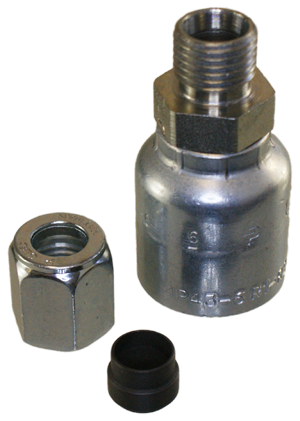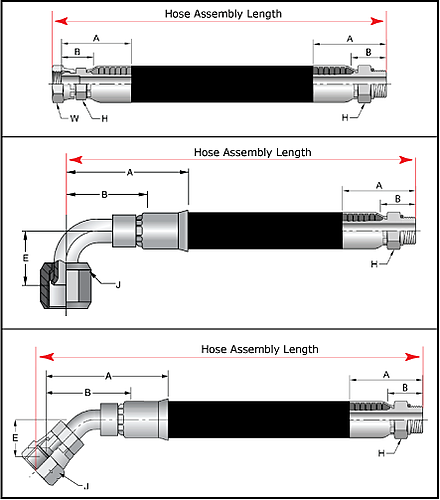
Table of Contents
Many mechanics are not trained on how to correctly measure and specify hose length. As a result, a replacement hose may end up being either little shorter or little longer than the original part. When inches matter, the confusion about properly measuring hose length can result in delays and extra expense.
When requesting a hose assembly, its length can generally be identified in two ways: overall length, or cut length. Overall length is the most common way to identify hose length and it is typically used when ordering Parker hydraulic and industrial hoses. The exception in family of Parker hoses are Parker PAGE hoses. Read on to learn the difference and get your order right the first time.
Overall Hose Assembly Length
The overall hose assembly length is measured end to end 99% of the time. Examples of the standard hose assembly length for a straight fitting, 45o fitting, and 90o fitting are shown in the picture below. There is one exception that is rare; it is detailed in the next section.
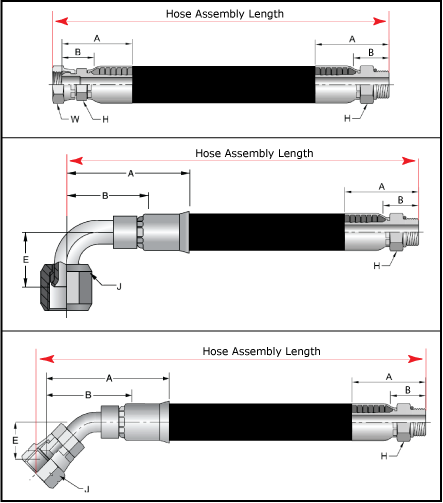
Exception: Parker Parflex PAGE Hose
Length calculations for PAGE hose assemblies are typically made sealing surface to sealing surface per the NAHAD Fluoropolymer Hose Assembly Specification Guidelines unless otherwise requested by the customer at time of order. Examples of the Parflex PAGE hose assembly length for a straight fitting, 45o fitting, and 90o fitting are shown in the picture below.
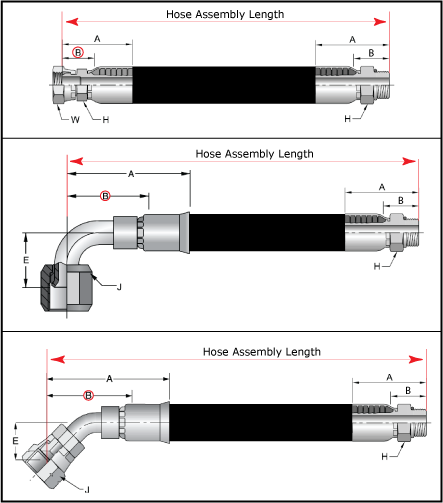
Hose Cut Length
The hose cut length can be measured with some help from specs in whichever Parker Catalog (depending on the fittings you are using) is relevant. Luckily, the dimension you need to be aware of is always going to be Dimension “B”. The hose cut length is always measured from the inside parameter of Dimension “B” to the other inside parameter of Dimension “B” – for reference see the picture below, specifically the parts in red.
Disregard dimensions A, W, and H when measuring cut length.
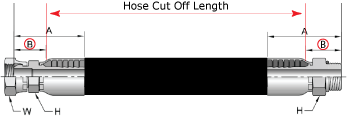
Posted by Vincent Lockwood


